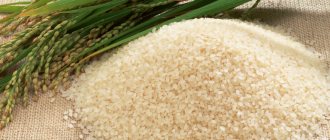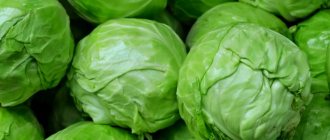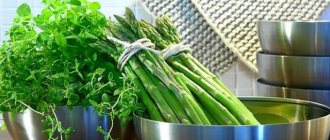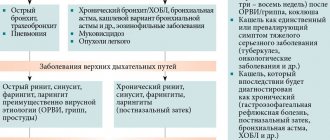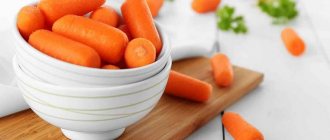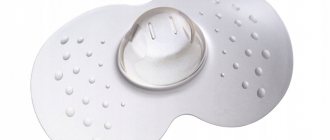The nutritional system of a nursing woman is noticeably different from the diet that the woman had before the birth of the baby. Products should be selected according to their benefits for the newborn. Through women's milk, everything necessary for the formation of a small organism is transmitted to the child.
Most foods have to be abandoned until the end of the lactation period. This article will focus on the use of spices, namely soy sauce. Is it safe to eat and will it harm the baby?
Composition, nutritional value and calorie content
Soy sauce has many advantages, among which its ability to slow down the aging of the body, prevent the growth of cancer cells and neutralize the oxidative effects of harmful substances is especially appreciated. The sauce, due to the presence of glutamic acid, can make the taste of dishes brighter. But despite this, this product cannot be consumed by all people.
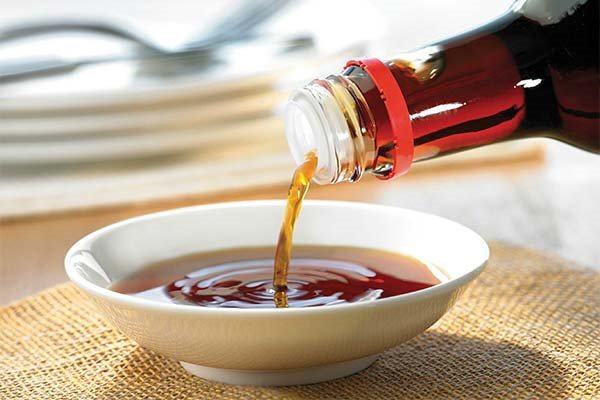
Soy sauce should be used with caution during breastfeeding, since it is difficult to determine in advance what reaction an infant will have to this product , given the fact that the product is quite often counterfeited. There are several types of sauce, so the nutritional value of each type has slight differences.
The nutritional value and calorie content of tamari soy sauce, consisting exclusively of soybeans per 100 g of product, is as follows:
| Squirrels | 10.5 g | 23% |
| Fats | 0.1 g | 0.3% |
| Carbohydrates | 4.77 g | 3.7% |
| Alimentary fiber | 0.8 g | 4% |
| Water | 66 g | 2,42% |
Soy sauce contains B vitamins (B1, B2, B3, B6, B9), PP, choline, as well as trace elements (potassium, magnesium, manganese, sodium, zinc). The calorie content of the product is 60 kcal per 100 g, which is approximately 6%.
Eating garlic during breastfeeding: all the pros and cons
Pregnancy is a crucial period for every expectant mother. But even after meeting the baby, a woman should not forget about her. To provide a child with high-quality milk, it is necessary to review the entire diet so that the child receives all the necessary vitamins and minerals to ensure proper and complete development.
When breastfeeding (hereinafter referred to as breastfeeding), many foods are prohibited or their consumption should be minimized, as they cause allergic reactions, bloating and colic in the baby. Then the question arises: is it possible to eat garlic when feeding a newborn and continue breastfeeding?
Show content
Why does this question arise?
Can a nursing mother eat garlic? The use of garlic during breastfeeding is shrouded in myths:
- the essential oils of the vegetable, getting into the milk, give it an unpleasant odor;
- the taste of milk changes;
- allergic reactions are possible;
- garlic can cause colic in a baby.
Reference. Milk is formed from lymph and blood.
The appearance of milk in women depends on many processes in her body:
- physical activity;
- diet;
- changes in hormonal levels;
- mood swings.
The conducted studies clearly proved that during the day, all indicators are in constant dynamics. Therefore, a newborn quickly gets used to slight fluctuations in the taste of mother’s milk.
What does the product contain?
The composition of the vegetable is extremely rich in macro and microelements. He is extremely helpful.
It contains:
- cellulose;
- nitrogenous compounds;
- protein;
- potassium;
- sodium;
- sulfuric acid;
- calcium;
- allicin;
- sulfur compounds;
- phytoncides;
- ascorbic acid;
- phytostreins;
- B vitamins;
- essential oils;
- bioflavonoids;
- antioxidants.
The most famous properties of this spice:
- anti-inflammatory;
- antiparasitic;
- antimicrobial.
How does eating a vegetable affect the taste of milk?
Allicin is the substance that gives the vegetable its pungency. Once in the body of a nursing mother, it also saturates the milk. However , in order for milk to become bitter, you need to eat a lot of garlic.
Attention! Excessive consumption of vegetables by the mother can cause flatulence in the baby.
But many other foods also cause colic. The main thing to remember is everything in moderation.
Is it possible to eat during breastfeeding?
Experienced pediatricians are unanimous in their opinion that it is possible and necessary to eat a spicy vegetable when feeding a newborn.
So can mothers eat garlic when feeding their newborn? The baby will not notice any changes if the mother did not deny herself a clove of garlic during lunch or dinner during pregnancy .
Since during the period of intrauterine growth the fetus already knows the aroma and taste of garlic (we talked about the peculiarities of using garlic by pregnant women here). Studies conducted in the 1990s proved that substances found in vegetables even increase a child’s appetite. Breastfeeding mothers were divided into two groups.
Some took garlic extract pills, others did not. A week later, it was noted that children whose mothers took the pills nursed more actively and had an increased appetite.
Members of the International Council of Lactation Consultants have experimentally proven that it is during this period that a baby can be instilled with an interest in a variety of tastes. There is no need to be afraid of reasonable experiments.
Does the age of the child matter?
Any product should be introduced into the diet in stages. This is especially true for fresh vegetables and fruits, sour and bitter foods. It is better not to eat such foods at all until 3 months. This also applies to garlic. By the 4th month of life, the newborn’s digestion is stabilized and improved. You can try adding a third of a clove per day to the mother’s diet after 4 months . First, the garlic is heat-treated, then eaten in its pure form. Throughout this period, the child’s behavior and condition must be monitored. If everything went well, increase the amount of vegetable to one clove.
You will find more information about at what age you can give garlic to children in a separate material.
Effect on lactation and the body
Allergy
Important! This vegetable is not one of the so-called golden eight allergenic foods.
But every baby is individual. Therefore, the vegetable should be introduced gradually and with caution so as not to provoke an allergic reaction.
There is an opinion that eating garlic during breastfeeding affects the amount of milk. Lactation is reduced. For some time, this erroneous conclusion was put into practice when it was decided to wean a child. But experiments have shown that a small amount of garlic, on the contrary, increases appetite. The baby eats more actively, which means more milk comes in.
Taste of milk
Scientists have confirmed that garlic can indeed add bitterness to the taste of milk . But for this you need to eat kilograms of it. Eating the vegetable in moderation will not have a strong effect. And children who are introduced to garlic in the womb will not notice any change in the taste of their mother’s milk.
The appearance of flatulence
All products must be administered carefully. The newborn's imperfect digestion system immediately responds to new nutrients.
There is an opinion that garlic causes colic in newborns. But the myth has long been dispelled.
Since all foods consumed by the mother in large quantities and incorrectly introduced into the diet can cause colic in the baby. It is necessary to constantly remember the measure.
What dosage is allowed?
If the child reacted calmly to the new product, then you can try eating fresh garlic. To begin with, take only a third of a small clove. Again, observe the reaction of the child’s body. If everything is fine, then you can continue to eat a clove of garlic per day. This is beneficial for both - mother and baby.
Cooking technology
There are 2 ways to produce soy sauce. This is a traditional way of fermentation and from hydrolyzed soy protein. Sometimes sauces that are produced industrially are a combination of two products made by different methods.
Fermented sauce
Soy sauce prepared by fermenting soybeans is considered natural and will not harm the human body. For its production, soybeans, grain and special molds (Aspergillus oryzae or other species) are used. Traditional natural soy sauce takes several months to produce.
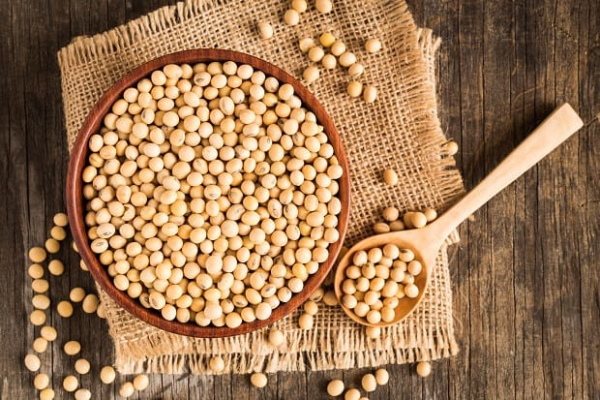
The manufacturing procedure is as follows:
- Soybeans are boiled after soaking in water.
- The wheat is first fried and then ground.
- Boiled beans and crushed grains are mixed and spores of Aspergillus fungi and other microorganisms are sown on them.
- The mixture of beans, grains and fungi is poured with a salt solution or simply sprinkled with salt, leaving the mixture to ferment for a period of 40 days to several months.
During this time, microorganisms break down the mixture into amino acids, simple sugars and protein enzymes, which gives the product a dark brown color. During fermentation, yeast saturates the future sauce with newly formed additives. At this stage, the product is called soybean paste.
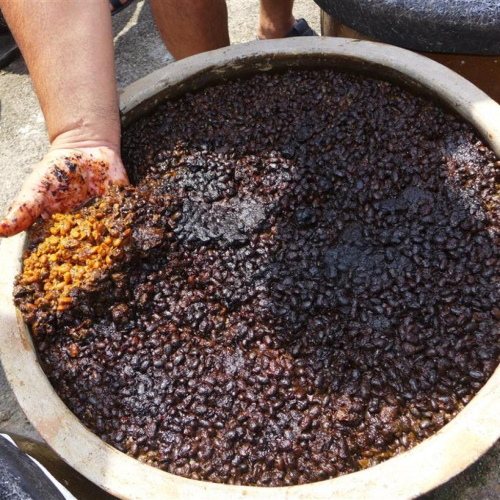
Next, the fermented mass is pressed to separate the already liquid mass from solid particles. The solid waste is subsequently used as soil fertilizer or fed to livestock. The resulting raw liquid mass is heated to destroy yeast and molds. After this, the resulting sauce is passed through filters and packaged for sale.
Making soy sauce from hydrolyzed soy protein
Producing soy sauce through fermentation takes a long time, and modern manufacturers have found a way to speed up the process. To do this, chemical components are used that speed up the procedure. Thanks to this, the production of the product takes only a few days, so it is available to customers, but such soy sauce cannot be called healthy.
When breastfeeding, only natural soy sauce can be consumed, and not one made from hydrolyzed soy protein . Such sauces differ in taste and smell from varieties that are made using traditional methods, and may contain carcinogenic substances.
Rolls during breastfeeding - good or bad?
The health and well-being of the child largely depend on how balanced the mother’s diet is. Therefore, most women have to give up their usual foods while breastfeeding. After all, even the most harmless ingredient in their composition can lead to sudden allergies or stomach problems in the baby.
It’s especially difficult for fans of Asian cuisine, so they often ask whether breastfeeding women can eat rolls.
A favorite dish often contains exotic ingredients and spices, which calls into question their safety for the child’s well-being.
Rolls in the diet of a nursing mother - what to look for
Specialized doctors (nutritionists, endocrinologists, allergists) are divided on whether sushi rolls can be consumed during lactation. Some are sure that rolls are a unique dish containing many ingredients necessary for health. These are iodine, B vitamins, fatty amino acids (fish, seafood, and algae are rich in them).
Other experts, when asked whether a nursing mother can have rolls
, give a sharply negative answer. They are convinced that raw and smoked fish, spicy seasonings, and salty soy sauce may be unsafe for the health of infants.
In addition, some catering establishments do not pay due attention to the quality of the products included in the rolls. Therefore, many doctors argue that this dish has no right to be in the diet of lactating women.
Undoubtedly, each specialist has his own view of the problem. Therefore, you need to consider all the pros and cons of sushi rolls in order to make a personal conclusion about their harm or benefit.
Advantages of rolls
Sushi rolls are among the dishes that have a number of undoubted advantages over traditional European dishes. They consist of products that have a positive effect on human health. Among them:
- Rice. It contains a huge range of vitamins and minerals;
- Seaweed. They contain a large amount of vitamin B12 and iodine;
- Fish, seafood, vegetables. They are famous for their high content of microelements and vitamins.
Undoubtedly, soy sauce, pickled ginger, and wasabi (spicy Japanese horseradish) are useful for adults. They have immune-strengthening, antiseptic, and anti-inflammatory properties. But for children, such ingredients can be dangerous. When they enter the baby's body through mother's milk, they often cause an allergic reaction.
Cons of sushi rolls
Women wondering if rolls can be used while breastfeeding,
must take into account the specific features of this dish.
For example, the fact that raw fish may contain parasites, and seasonings intended to eliminate them are not always positively perceived by the child’s body.
Ginger and wasabi often cause allergies, and in addition, they give breast milk a specific taste.
Having familiarized themselves with the pros and cons of rolls, nursing mothers can be convinced that, subject to certain rules, this delicious Japanese dish may well be included in their menu.
Source: https://etosushi.com/poleznosti/rolly-pri-grudnom-vskarmlivanii-blago-ili-vred
Useful properties for women
The sauce contains a lot of protein, lecithin, choline, starch and fatty oils. The proportions of these substances are ideal for the human body. Soy is similar in composition to meat and is often used in vegetarian menus.
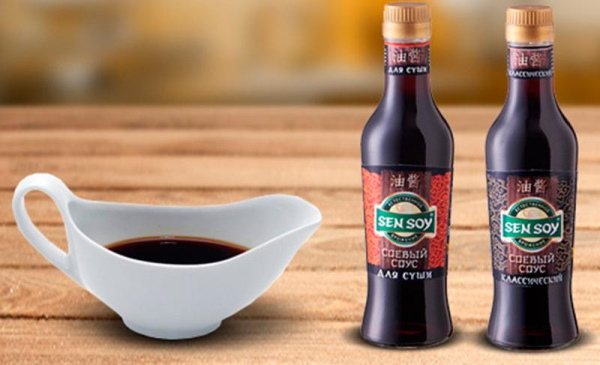
The components of soy sauce are beneficial for women's health, so you can add this product to your diet during painful menstruation, menopause and menopause. The composition also contains isoflavonoids, which are similar in structure to the female hormone estrogen, and can compensate for the lack of hormones caused by menopause.
The natural product is an antioxidant, so it is used to remove freckles and age spots. Soy or soybean oil can be used as a sunscreen and as a hair care product.
How the product can be dangerous, possible harm to the mother and baby
Soy sauce during breastfeeding does not have any effect on lactation, but it can be used periodically as a dressing for main courses. However, you can only use a high-quality product, which is difficult to find in stores.
But even if you managed to buy a natural product, it may not be beneficial for the baby. Frequent inclusion of soy sauce in a woman's diet during breastfeeding can lead to deterioration of the thyroid gland and also slow down the functioning of the brain.
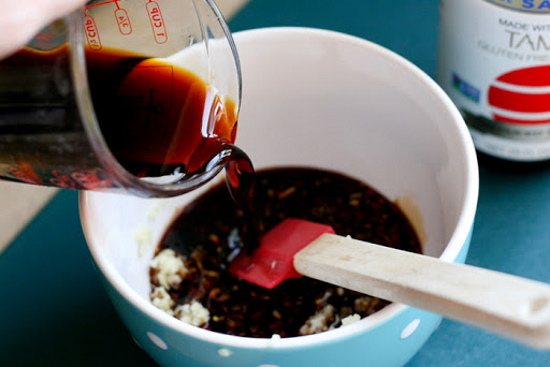
An allergic reaction that may occur in a child to this product cannot be ruled out. Substances similar to female hormones contained in soy sauce, which are beneficial for women, can have an adverse effect on the baby, including inhibition of its development.
Reviews
Antonina, St. Petersburg
To pamper me, my girlfriend bought me sushi with soy sauce. I was skeptical about raw fish and did not eat them. But I tried this delicacy sauce and was left disappointed. The baby developed red spots on his face. As it turned out, the product contained many chemical additives, and this is unacceptable, so you need to choose only high-quality products.
Milana, Moscow
A week ago my husband brought home soy sauce. Of course, I was surprised, but I decided to try it, having first studied the information on the Internet about the effect the product could have on a child. A couple of days passed, no reaction occurred. Therefore, eat a little at first to see how the baby reacts to the innovations.
As can be seen from the reviews, spicy seasoning should be on the diet menu for breastfeeding, but it should be a natural product. Before you buy soy sauce, you need to carefully study its composition and not abuse it.
- Related Posts
- Can a nursing mother eat vinaigrette: which ingredients are dangerous?
- Cinnamon during breastfeeding
- Sausages while breastfeeding: can a young mother eat?
« Previous entry
How, how much and when to use the sauce while breastfeeding at 1-2 months
During breastfeeding, a young woman should pay great attention to the choice of food products and the method of preparing different dishes.
The still unformed digestive system of a newborn obliges a nursing mother to limit her menu and remove some foods from it. There are different opinions regarding the use of soy sauce during lactation, but they all boil down to the fact that if the baby is 1-2 months old, then it is better for the mother to refuse this seasoning.
Introduction rules
All doctors agree that the seasoning should be excluded from the menu of a nursing mother until the baby is 4 months old, or even better - 7. This is explained by the fact that the sauce is made by fermentation.

And all fermentation products should be excluded from the diet for the first six months of a child’s life, since his digestive system has not yet formed and is not able to process certain substances that can cause intestinal upset and lead to constipation or diarrhea.
During breastfeeding, soy sauce should be added to the diet little by little, observing the baby’s reaction. If after feeding the child becomes restless and irritated, this may indicate that he has a stomach ache. In this case, you need to remove this product from your mother’s menu for several weeks, and then introduce it again. And if the reaction repeats, then you should exclude the product from your mother’s menu completely.
Seasoning consumption standards
But even if there was no reaction from the baby and no negative reaction appeared after feeding and the child feels well, then the mother still should not use soy sauce more than once a week.
Otherwise, the baby’s body will receive a high dose of substances that can have a negative impact on the formation and development of his body, as well as negatively affect the health of a nursing woman, since abuse of soy sauce during lactation can worsen the functioning of the brain and thyroid gland.
How much can you consume per day?
A nursing woman can add soy sauce to her dishes gradually, no more than 30-50 g per day and no more than once a week.
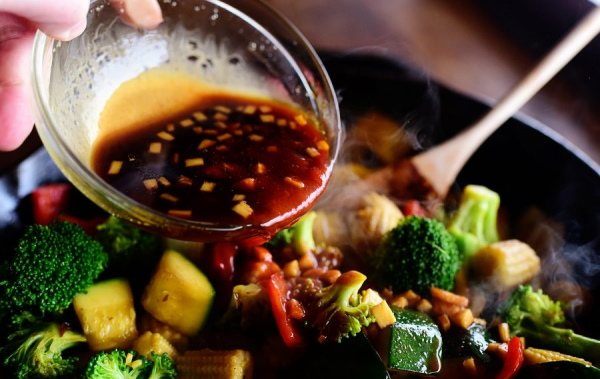
During breastfeeding, soy sauce should be introduced into food gradually, observing the baby’s reaction.
More frequent use of the seasoning will lead to a malfunction of the digestive system, and may adversely affect the endocrine system of the newborn.
Can I use it at night and on an empty stomach?
Soy sauce contains a substance called tyramine, which provokes the release of adrenaline (an excitatory hormone). Adrenaline, in turn, interferes with relaxation and falling asleep quickly. Therefore, it is advisable to consume dishes that contain soy sauce several hours before bedtime.
Soy sauce is also considered a dangerous condiment for an empty stomach due to its high sodium content. Therefore, you should not include this product in your first breakfast dishes.
What salads can nursing mothers eat: selection of ingredients
During the first months of breastfeeding, snacks are prepared according to recipes that include:
- boiled meat. It is allowed to eat chicken, turkey, rabbit, lean beef, pork;
- offal. It is useful for a young mother to eat liver and chicken hearts;
- boiled, baked fish. It is best to eat cod, pollock, hake, pike perch in the first months of lactation, then include fatty varieties in the diet - herring, mackerel. Salads with smoked, salted fish, preserves, canned food, and crab sticks should be excluded;
- vegetables. During the first months, salads during breastfeeding are prepared from green and yellow species. It is allowed to add broccoli, zucchini, squash, pumpkin, green peas, green beans, and potatoes to the dish. Then add corn, cucumber, green pepper, yellow tomatoes, lettuce, carrots, beets;
- fruits. A young mother is allowed snacks with an apple, pear, and banana. After 3 months you can add persimmon, pomegranate;
- dairy products. Cheese, feta cheese, yogurt, and kefir are also used in snacks if the baby tolerates them well.
How to choose a quality product in a store
There is a huge variety of soy sauce on the market from different src=»https://kidteam.ru/wp-content/uploads/2020/07/soevyy-sous-pri-gv-8.jpg» class=»aligncenter» width=» 550″ height=”414″[/img]
To purchase a quality product, you should know some rules:
- natural soy sauce must be certified;
- non-organic soybeans and GMOs are most often used to make sauce in the USA;
- The highest quality soy sauces are considered to be products produced in Japan, Indonesia, China and Korea;
- a quality product is brown, but not dark brown or almost black;
- the label should not contain information about an artificial or diluted product;
- the label of a natural sauce must contain the word “fermented”;
- the natural product is packaged in glass containers;
- the percentage of protein in the sauce should not exceed 6%;
- high-quality seasoning must be clean and free of foreign elements.
Natural sauce cannot be cheap. The seasoning should contain only soy, wheat, salt, sugar and a little vinegar. Despite the rather salty taste, 100 g of natural product contains only 3.5 g of salt.
What can be replaced
If drinking soy sauce is impossible during breastfeeding, then it can be replaced with other products, depending on what dishes are being prepared:
- for preparing fish and seafood dishes, you can use a dressing consisting of mustard, olive oil and balsamic vinegar;
- for meat salads of oriental cuisine, Worcestershire sauce is suitable, which tastes similar to soy;
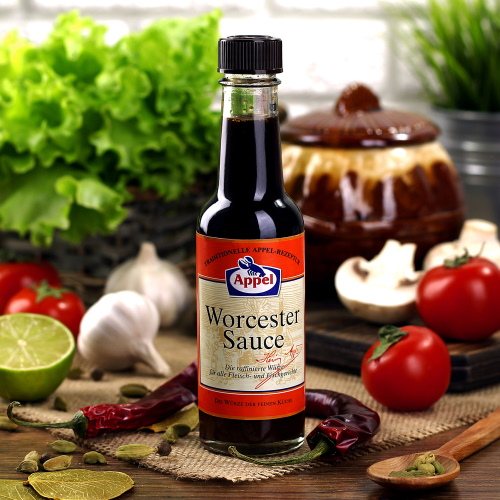
- For meat and rice, you can make a sauce from the marinade of canned olives.
How to make natural soy sauce with your own hands
The original recipe for soy sauce requires the presence of a special type of mushroom, and the process of making the seasoning is very complex. But there is an affordable recipe for homemade sauce made from soybeans and ingredients that can be found in any store. This sauce will differ from the original one, but it is suitable as a substitute for meat, fish and rice dishes.
To prepare homemade sauce you need to take 240 g of soybeans, 2 tbsp. flour, 5-7 g salt (preferably sea salt), 4 tbsp. butter, 4 tbsp. broth (mushroom or vegetable).
Cover the beans with water and cook over low heat until soft. Then drain the water and grind them in a blender to a paste consistency. Add all the other ingredients to the soy puree and mix the whole mass thoroughly.
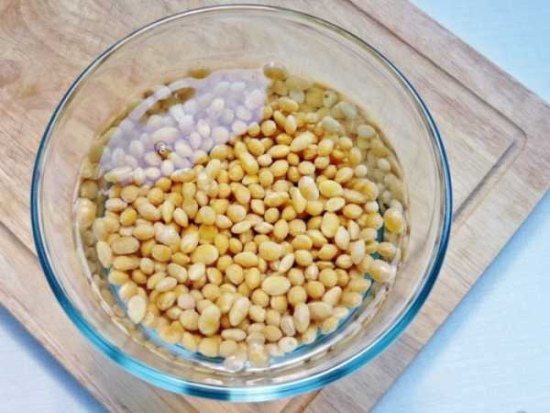
If desired, you can add seasonings (red pepper or ground ginger) to the finished paste. Place the mixture over low heat, stirring constantly, and bring to a boil. Cool the sauce and use it as a seasoning for rolls, seafood, vegetable dishes, salads and cereals, as well as a marinade for fish or meat.
Are there any benefits to soy sauce?
Soy sauce is an exclusively natural product obtained by fermentation from soybeans, salt and wheat grains. Traditional sauce does not contain chemical additives and can have a beneficial effect on the body. The benefit of this product lies in its composition rich in microelements:
| Component | Why it's useful |
| Antioxidants | Soy sauce is even higher than red wine in its content of antioxidants that prevent premature aging. |
| Phytoestrogens | Plant-based estrogens are extremely beneficial for women, especially pregnant and lactating women. |
| Amino acids | Their presence accelerates metabolism and the formation of new cells. |
| Protein | Soybeans are a well-known source of easily digestible vegetable protein and impart this property to soy sauce. This makes the product indispensable for vegetarians. |
| B vitamins | Thanks to their content, the sauce has a positive effect on the health and appearance of hair, skin and nails, and also strengthens the nervous system and helps normalize sleep, which is very important for nursing women. |
| Other microelements (calcium, iron, potassium, magnesium) | Their content makes the sauce especially useful for people suffering from cardiovascular diseases. |
Soy sauce contains virtually no fat and is a low-calorie product. This fact distinguishes it favorably from most currently popular sauces and dressings. The energy value of soy sauce ranges from 50 to 70 kcal, which makes it suitable for dietary nutrition. This is very important for young nursing mothers who want to regain their former slim figure after childbirth.
It is important to note that only a natural product has all the positive properties. The more chemical additives a sauce contains, the less benefit such a product will bring to the body. Finding natural sauce on Russian shelves is almost impossible. Store-bought soy sauce samples, at best, do not contain all the beneficial characteristics. In the worst case scenario, the product can be truly harmful to health.
Soy sauce recipes for nursing mothers
Below are recipes for dishes using soy sauce.
Baked potatoes with soy sauce
Ingredients of the dish:
- potatoes – 5-6 medium-sized pieces;
- garlic – 2-3 cloves;
- salt - to your taste;
- spices – whichever ones you like;
- soy sauce – 100 g;
- olive oil – 2-3 tbsp.
Preparation procedure:
- Peel the potatoes.
- Cut into two parts, and then cut each half lengthwise to make slices.
- Put water on fire and add salt.
- Place the chopped potatoes in boiling water and cook until half cooked.
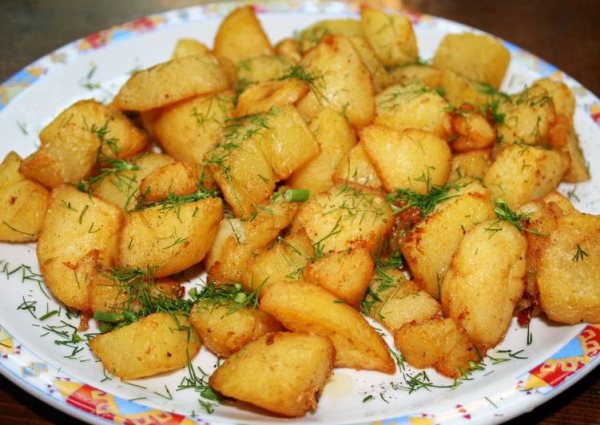
When the potatoes are half cooked, drain the water. Pour the prepared marinade over the potatoes and mix well. Grease a deep baking sheet or frying pan with a thin layer of oil, place the prepared potatoes in one layer and bake at a temperature of 180-200 degrees for 15-20 minutes. A golden crust should form on the potatoes. Place the finished dish on a plate and sprinkle with herbs.
Fish cutlets
For fish cutlets, any lean fish, such as cod or hake, is suitable.
Ingredients of the dish:
- fish fillet – 900 g;
- chicken eggs – 1 pc.;
- soy sauce – 2 tbsp;
- Provençal herbs – 0.5 tsp,
- breadcrumbs – 100 g.
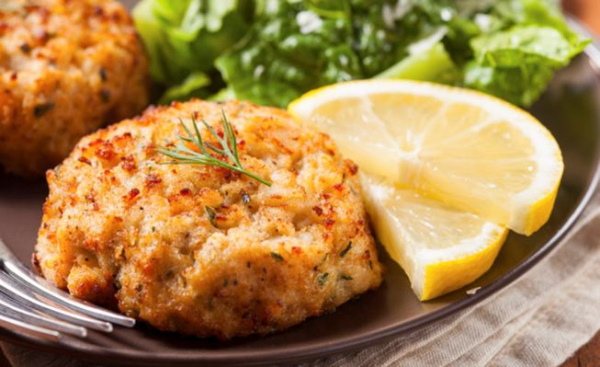
Step by step cooking procedure:
- Grind the cod fillet in a meat grinder.
- Add egg, aromatic herbs and soy sauce to the minced fish.
- Mix the entire mixture for future cutlets well.
- Form cutlets, roll each in breadcrumbs and fry in a hot frying pan in vegetable oil.
To ensure that the cutlets cook evenly, they should be cooked over medium heat and turned several times.
Whether or not women with breastfeeding should eat dishes with soy sauce is up to them to decide. The main thing is to introduce it to the menu carefully so as not to harm the child.


